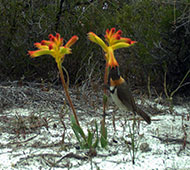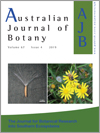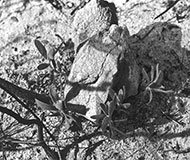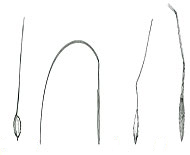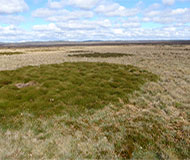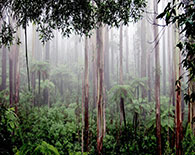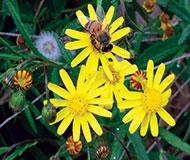Australian Journal of Botany
Volume 67
Number 4 2019
The pollination biology of the catspaw Anigozanthos humilis (Haemodoraceae) was assessed. Photos from camera traps showed flowers in our study site were visited almost exclusively by the western spinebill (Acanthorhynchus superciliosus), although visits were infrequent. Exclusion of vertebrate pollinators resulted in negligible seed set. Genetic analysis of seed showed complete outcrossing. This highly dependent pollination system suggests catspaws are vulnerable to impacts on these bird pollinators.
Anatomical changes in the testa of Leucospermum during its growth and subsequent degradation in the soil after burial by ants are linked with environmental cues for dormancy and germination control in fynbos. Roles for oxygen impermeability of the testa and embryo thermodormancy are explained. Results from the substantial Leucospermum literature are reviewed and a seed biological profile developed. Parallels are drawn with other fire-prone Mediterranean-type vegetations.
Awns are a bristle-like structure found on many seeds of Australia’s native grasses. They vary greatly in shape and number per seed across species, with this study showing 20 awn types to be present across 42% of all native grasses. The structural and taxonomic diversity of awns suggests that they may play a role in grass species fitness.
Circles consisting of the rush Empodisma minus have expanded and increased in number in subalpine grassland between 1953 and 2011. They occupy the flatter places on the plain. They tend to become fainter with increased size. Their expansion may be a temporary effect of changed land use.
Wet sclerophyll forests of south-eastern Australia are subject to both wildfire and logging. Knowledge of their long term effects on plant diversity is poor. Our results demonstrate clear-fell logging leads to long-term (up to 32 years) reductions in the abundance of ecologically important understorey plants. In contrast, wildfire does not cause this change. Negative effects of logging were generally sustained and in some cases exacerbated by subsequent wildfire. The interval between wildfires did not have a strong overall effect on species’ abundances.
Senecio madagascariensis is a native species from South Africa and Madagascar, but is considered invasive in much of the world. We analysed the populations from South America and measured the dispersal ability using the diaspore traits. The environmental conditions and population density could explain the differences along distribution range, which can help in the delimitation of control strategies.
